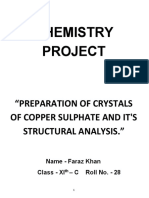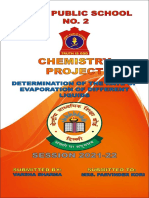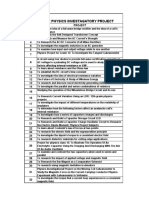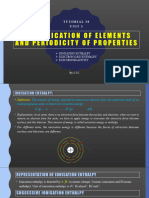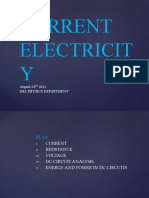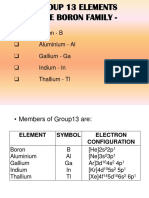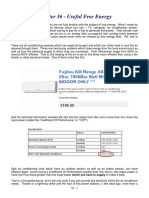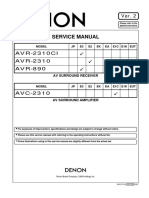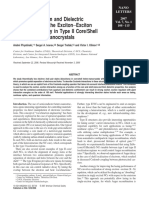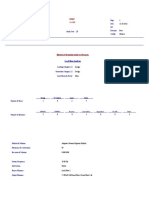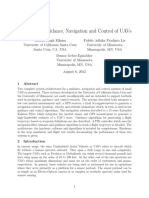100% found this document useful (1 vote)
755 views16 pagesPhysics Project: Class Xii SESSION 2021-2022
This physics project discusses various topics related to current electricity including electric current, current density, drift velocity, Ohm's law, resistance, cells, internal resistance, EMF, Kirchhoff's laws, Wheatstone bridge, meter bridge, and potentiometer. The project was created by Ojanshu Pati Tripathi, a class 12 student, and acknowledges help from their physics teacher and others.
Uploaded by
Coc6 GuptaCopyright
© © All Rights Reserved
We take content rights seriously. If you suspect this is your content, claim it here.
Available Formats
Download as DOCX, PDF, TXT or read online on Scribd
100% found this document useful (1 vote)
755 views16 pagesPhysics Project: Class Xii SESSION 2021-2022
This physics project discusses various topics related to current electricity including electric current, current density, drift velocity, Ohm's law, resistance, cells, internal resistance, EMF, Kirchhoff's laws, Wheatstone bridge, meter bridge, and potentiometer. The project was created by Ojanshu Pati Tripathi, a class 12 student, and acknowledges help from their physics teacher and others.
Uploaded by
Coc6 GuptaCopyright
© © All Rights Reserved
We take content rights seriously. If you suspect this is your content, claim it here.
Available Formats
Download as DOCX, PDF, TXT or read online on Scribd
/ 16





